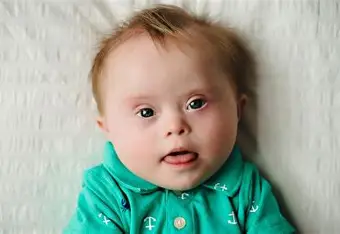Medications: Analgesics, Donepezil, antidysrhythmics, diuretics.
Note: The medication should not be taken without the doctor's prescription.
Techniques used by the physiotherapist There's no specific treatment for Down syndrome. The importance of early intervention is emphasized. Physiotherapy treatment helps to live as independently as possible. An early intervention stimulates motor skills, helps to strengthen the muscles, keeps the body in proper alignment, and therefore prevents future health problems.
There is a wide range of physiotherapy techniques designed to help people with Down syndrome to reach their full potential. The earlier intervention is the best treatment. Each child will be treated differently as different children have different needs. Physiotherapy programs can boost the child's physical and mental growth. The therapist helps the kids to learn a variety of skills, such as:
- Rolling over, crawling, walking, and playing
- Feeding and dressing themselves
- Thinking and solving problems
- Talking, listening, and understanding others
Relaxation exercises: Relaxation includes breathing control, focusing on relaxing the upper body, and breathing from the tummy. This can be used in conjunction with deep breathing helping the muscles to relax.
Progressive muscle relaxation: This technique involves slowly tensing and then releasing each muscle group starting with the muscles in the toes continuing with each muscle group individually and finishing with those in the head.
Co-ordination exercises: These exercises are done to achieve a proper action, involving coordinated action of various segments and general coordination, which involves the entire body. Activities like hitting a balloon, rolling balls, popping bubbles, throwing into a container, throw and catch, juggling, egg and spoon race, etc are included in this technique.
Balance exercises: The physiotherapist uses equipment such as an exercise ball or bobath ball, to hold the head erect or to maintain a sitting position. Skipping, jumping, and dribbling a ball may be incorporated into the treatment program. Balance training starting from various postures like control of the head from prone positions, to the trunk in the seated position, etc. Dynamic and balance in motion training should be given.
Motor function exercises: The physiotherapist teaches the patient appropriate ways to position the body. The therapist helps to prevent the child from developmental delay and to reach the milestone according to the age. Physiotherapy includes exercises, manual therapy, and education of the patient.
Strengthening exercises: Strengthening exercises are given for posture, gait, and joint problems. Other techniques include crawling, climbing, roll-ups, pushing up, bridging, crab walking, planks, wheelbarrow games, and fun tasks are adjusted as the child grows. Fitness activities can be used to reduce the risk of obesity and heart problems.
Skills Developmental exercises: Motor skills like sitting to standing, standing to sitting, crawling, and walking can be taught. Training for proper positioning, movement, feeding and playing are also included in the treatment plan.


